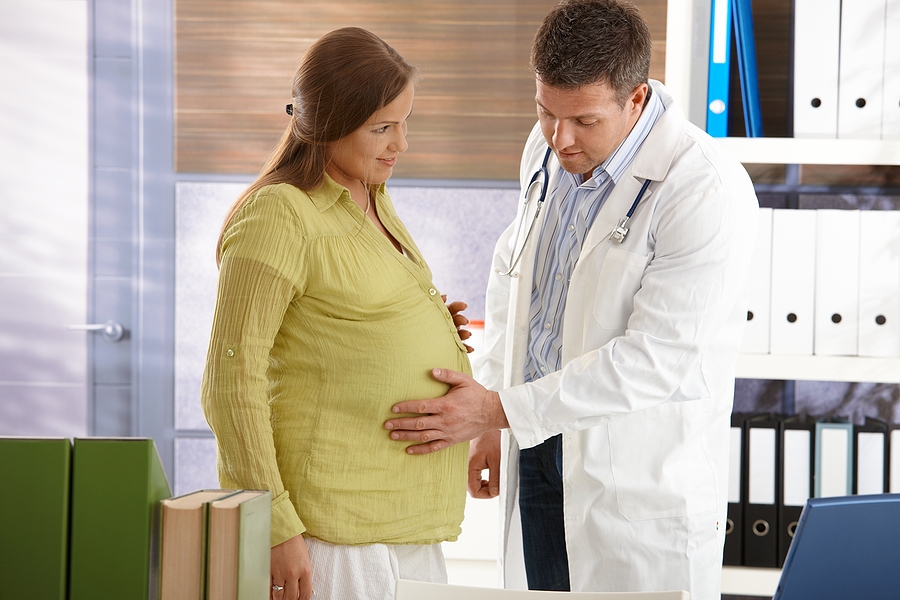Becoming a mother is inarguably one of the best moments in the world. It also brings together many physical and psychological changes for the woman. If this is your first pregnancy, the chances are that you will be bombarded with information both offline and online about all you can expect during this phase. Added weight, cravings, bloating, etc. are just some of the changes experienced by mothers all around the world.
For many women, one of the changes to your body that come along with pregnancy and childbirth is the infamous uterine prolapse. It is a condition where the muscles supporting pelvic floor organs such as the bladder, uterus, and rectum become weak or loose. These organs drop or press into or out of the vagina.
This is a non-life-threatening but uncomfortable, sometimes painful, and extremely embarrassing situation. It may limit a woman’s physical and sexual activity. Despite this, prolapse has been rarely talked about and hence properly dealt with. Today, thankfully the tide has turned and many more women are now aware of the condition and are willing to talk and deal with it head on to lead a more active and fulfilling life. However countless myths around prolapse remain to this day. Let’s debunk a few of them.
Myth 1: Long or difficult labour is to blame
Prolonged or difficult labour can be challenging. It may also include extended pushing, deliveries using vacuum pumps or forceps, which might prove stressful for your pelvic floor. But these aren’t the only culprits to be blamed.
Pelvic organ prolapse can begin during the pregnancy when the added weight of the baby stresses your pelvic floor. Activities such as lifting heavy weights can also add to the troubles.
One way to deal with this change is to watch what you eat. Although pregnancy will bring in a range of food cravings, you don’t have to give in to each one of them. Follow a prescribed diet plan and choose nutrition over unhealthy foods that only add to your weight.
Of course, you may have a cheesecake once in a while, but eating one every day is not wise. You may also want to sign up for pregnancy exercises at the gym. They help maintain stronger muscles and ease stress. Don’t forget to consult your doctor and physiotherapist when beginning or trying to maintain a particular exercise program during pregnancy.
Myth 2: It worsens with each childbirth
According to studies, women who have never had babies have also experienced prolapse. In contrast, many of the women with multiple childbirth have little to no prolapse. There is no direct correlation between childbirth and uterine prolapse.
The key is to keep yourself healthy with the help of exercise, healthy food, and the right maternity clothes. Your physiotherapist may suggest you wear maternity compression garments that are meant to support your lower back and pelvic floor muscles during pregnancy and postpartum.
These garments provide gentle medical-grade compression in a strategic way that makes your daily tasks easier. They can also be worn during exercise and at work. Ask your doctor or physiotherapist about selecting the right size for you.
Myth 3: Caesarean sections can help prevent pelvic floor dysfunction
Women with c-section surgeries have also experienced pelvic floor dysfunction. Avoiding vaginal childbirth alone cannot guarantee you relief from prolapse or incontinence. You also have to consider many other factors.
Many a time, it is seen that women born with weaker muscles are at a greater risk of prolapse. Genetics hence can be a deciding factor to the relative strength or weakness of muscles.
The only thing that can help you with prolapse prevention is keeping your pelvic floor muscles healthy. You may focus on strengthening your pelvic floor before planning for a baby and during pregnancy. Consult a doctor when you are planning to expand your family, and they may be able to guide you about inculcating healthy habits right from the beginning.
Myth 4: Pelvic floor damage during pregnancy is permanent
Fortunately, this is not true! The human body can surprise us at times. All the significant changes you undergo during pregnancy, such as abdominal muscle separation, incontinence, etc. during pregnancy can heal naturally under normal conditions. Only conditions with higher severity need external help.
The weight you put on and the stress caused to your pelvic floor muscles during pregnancy will reduce in due time with proper care. You don’t necessarily have to suffer the wrath of pelvic floor dysfunction postpartum. With adequate nutrition, exercise, and lifestyle habits, you can be back in your pre-pregnancy body.
Remember to get enough rest and do not exercise too early or too strenuously, but make sure to stay active in a healthy and supervised way.
Myth 5: Prolapse repair surgery is delicate between childbirths
All prolapse repair surgeries are done when the women have finished having children. Pregnancy and childbirth after the surgery can return us to ground zero. And every time you undergo this surgery, you are at higher risk of damaging your pelvic floor further.
Prolapse surgery is also often the last resort. It is only recommended if you cannot improve your condition with the help of Kegel’s exercise or are suffering from any other neurological diseases that prevent you from exercising. Normal cases do recover without surgery.
You must take this fact into account if and when planning for such a surgery. You may also want to take a second opinion when suggested this surgery, to be sure.
In conclusion:
Despite the challenges, you may overcome uterine prolapse by following your doctor’s advice. Many women with less severe symptoms often find their condition improving postpartum. It can be a lot to go through for new mums. But remember you are not alone, and you don’t need to believe in every myth that comes through the grapevine.
Please check any myths with your doctor, GP, physical therapist, or midwife. They will be able to guide you better.


